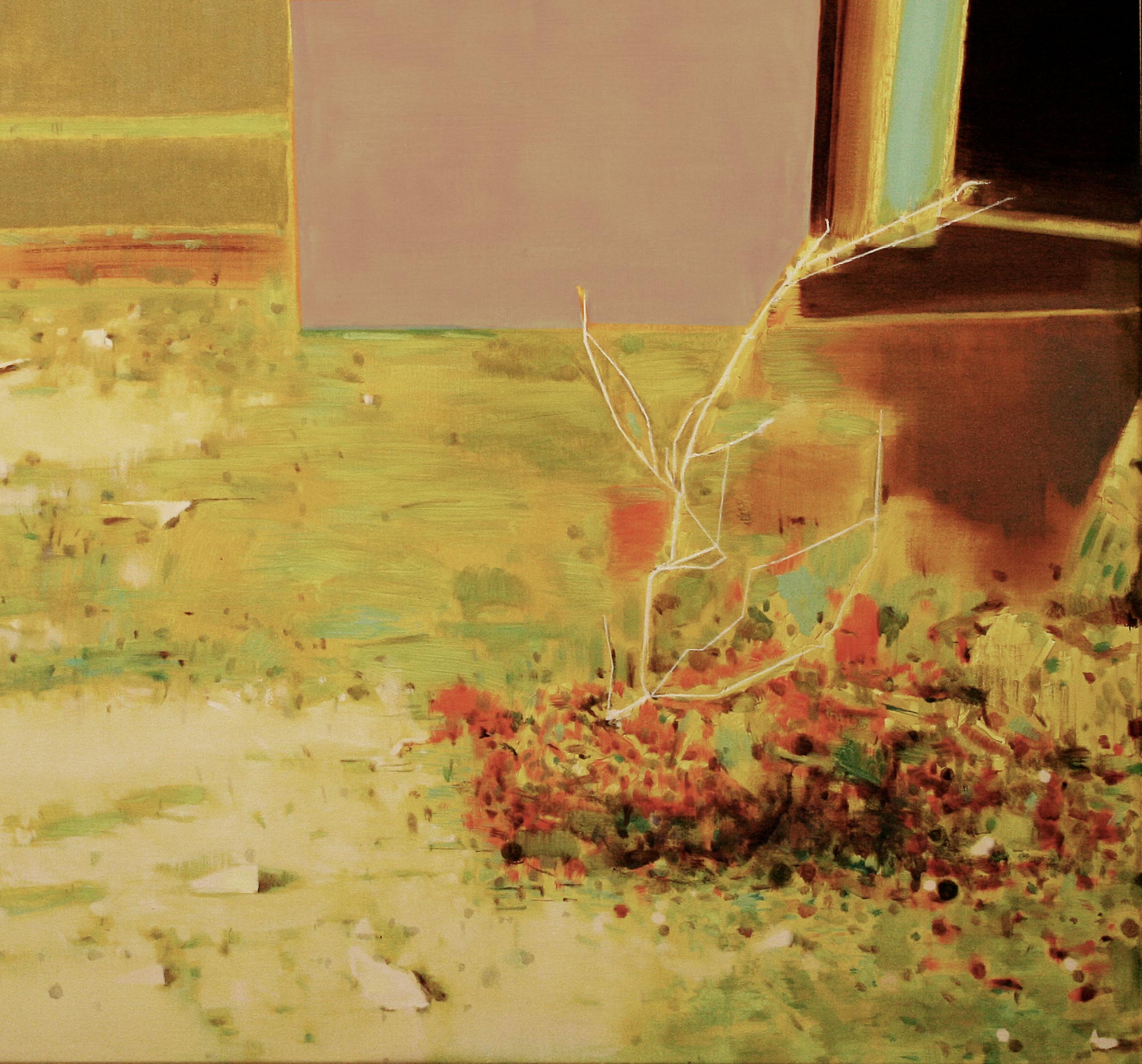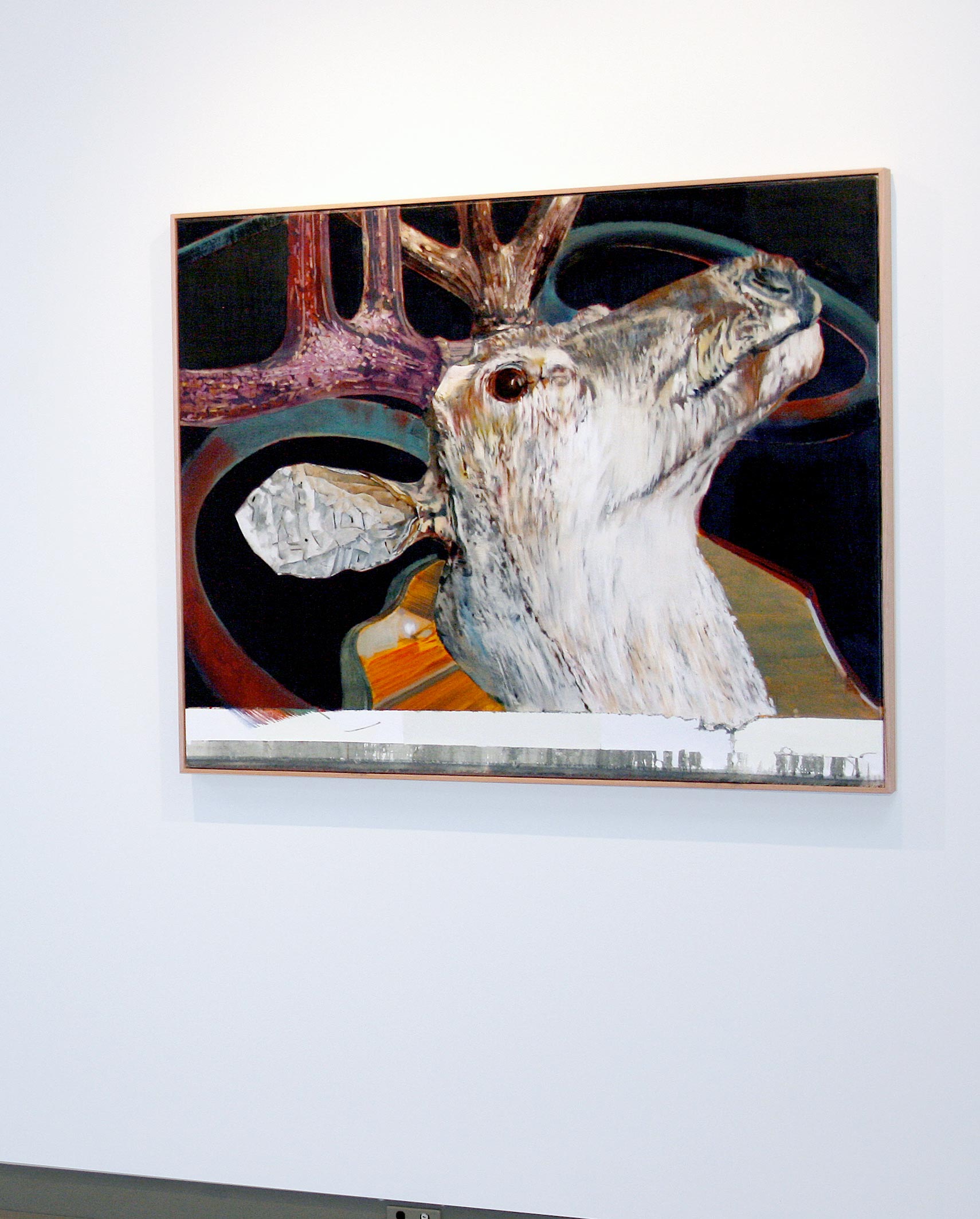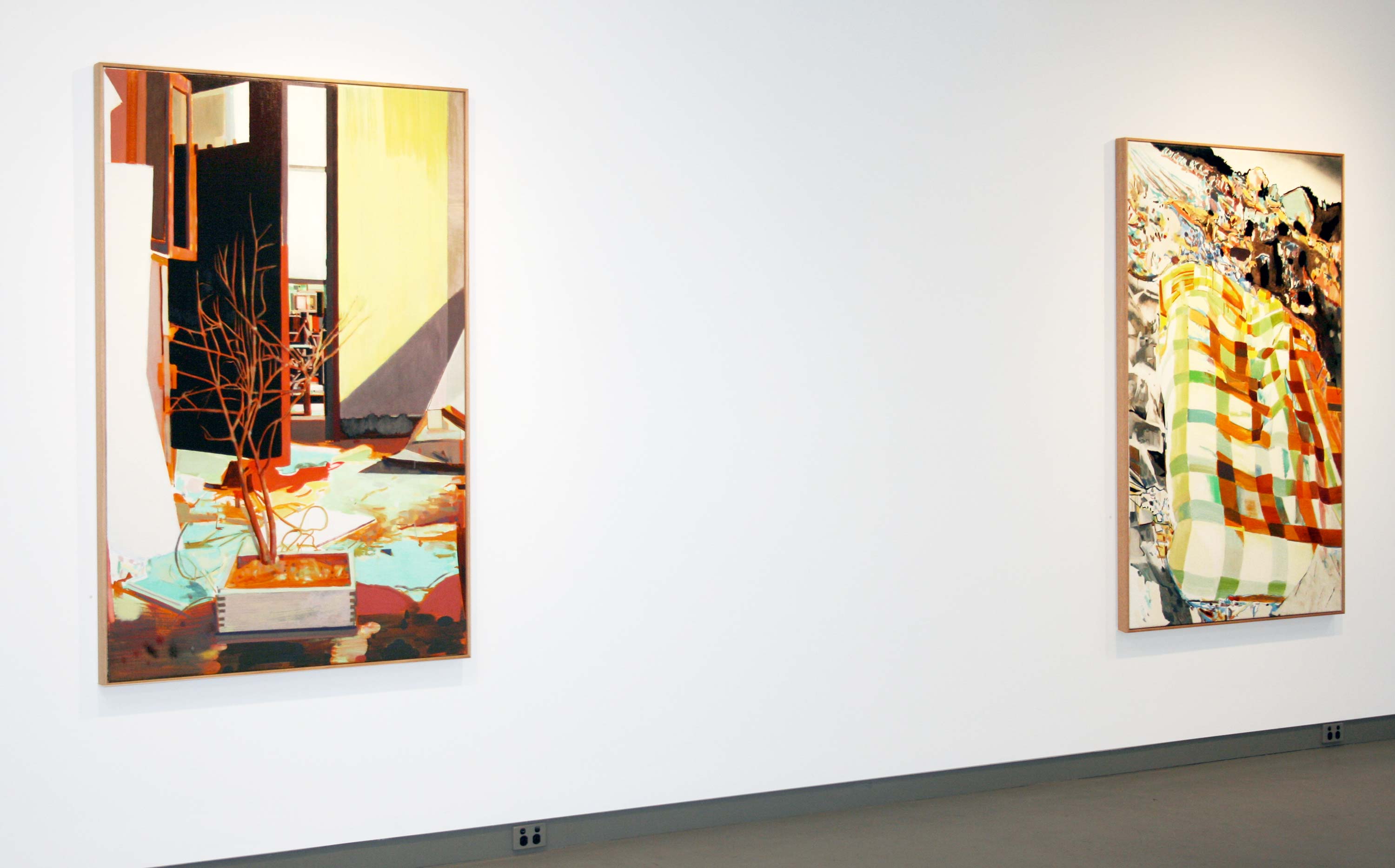Dieback, 2010
Jenny Port Gallery, Melbourne, Australia




'An order of sorts'
catalogue essay by Julia PowlesWhat do we do when the systems we live by are revealed to be meaningless? Do you make lists? I do. When I make a list I always include at least one item I have already completed. There is always one task that I can strike off immediately. This trick provides enormous relief, giving me peace of mind and the necessary sense of progress required to tackle the remaining jobs. It is as if only by cheating my own imperfect system that I can begin to move out of chaos towards order.
In Peter Westwood’s new works, it is the physical act of painting, of making something out of nothing that creates an order of sorts. It is by layering swathes of colour, by drawing in shapes and defining edges that Westwood creates an order out of the potential that awaits all paintings: the possibility for the subject to disappear into an elemental chaos of pigmented messiness and undisciplined matter. The slippery trick that is painting reveals itself in Westwood’s work: here, a geometric structure that is a doorway, there, a conglomerate of chairs, and occasionally a passage that is nothing to do with reality but everything to do with balance and correctness.
Is the best we can ever hope for a moment of clarity? A moment in which the image before us matches up with our idea of logic? When we crawled out of the primordial mire did we dream in our collective nascent humanity that we would one day be making paintings about the mire that is the great failure of the 20th Century’s political systems to effect social change? And more profoundly, our collective failure to create that elusive but longed for sense of fairness and social order?
Westwood’s imagery is sourced from photos he has taken in the course of living. While doing other things, Westwood came across the neatly made bed of a tramp who had set up home under a bridge. While living another life, Westwood wandered through an abandoned building in China and saw the remains of a physics department set up in a University built by Mao in order to educate the same people who might later be publicly denounced on the University’s notice boards. It is impossible not to gasp at the enormity of the failure of global communism.
The great leap forward has at the end of the day been as meaningless as the travails of the labourer whose physical expenditure has gone into the building of a physics laboratory that will be, by the time these paintings are made, demolished, rebuilt and erased from memory. Everything passes and the Universe continues to expand. However, if we’re lucky there are some things that might endure. Feeling, for example, remains. A taxidermed head of a deer looks out from the canvas at us, forever startled as it must have been upon the shock of its death, its glass eye staring wildly.
In Peter Westwood’s new works, it is the physical act of painting, of making something out of nothing that creates an order of sorts. It is by layering swathes of colour, by drawing in shapes and defining edges that Westwood creates an order out of the potential that awaits all paintings: the possibility for the subject to disappear into an elemental chaos of pigmented messiness and undisciplined matter. The slippery trick that is painting reveals itself in Westwood’s work: here, a geometric structure that is a doorway, there, a conglomerate of chairs, and occasionally a passage that is nothing to do with reality but everything to do with balance and correctness.
Is the best we can ever hope for a moment of clarity? A moment in which the image before us matches up with our idea of logic? When we crawled out of the primordial mire did we dream in our collective nascent humanity that we would one day be making paintings about the mire that is the great failure of the 20th Century’s political systems to effect social change? And more profoundly, our collective failure to create that elusive but longed for sense of fairness and social order?
Westwood’s imagery is sourced from photos he has taken in the course of living. While doing other things, Westwood came across the neatly made bed of a tramp who had set up home under a bridge. While living another life, Westwood wandered through an abandoned building in China and saw the remains of a physics department set up in a University built by Mao in order to educate the same people who might later be publicly denounced on the University’s notice boards. It is impossible not to gasp at the enormity of the failure of global communism.
The great leap forward has at the end of the day been as meaningless as the travails of the labourer whose physical expenditure has gone into the building of a physics laboratory that will be, by the time these paintings are made, demolished, rebuilt and erased from memory. Everything passes and the Universe continues to expand. However, if we’re lucky there are some things that might endure. Feeling, for example, remains. A taxidermed head of a deer looks out from the canvas at us, forever startled as it must have been upon the shock of its death, its glass eye staring wildly.

fig 1. Dear Head, 2010, installation view.

fig 2. Dieback installation view.
In an age when the individuals we don’t know are termed randoms, the homeless person whose bedding was so neat stands as a symbol of our failure to protect each other, our terrible failure to provide succor, and of our inability to comfort our fellow man. The abandoned University Halls stand, of-course, as symbols for the failure of modernity to deliver a future that is better than the past: a future that is kinder and more equitable. Ideologies have come and gone, with barely the blink of a dead deer’s eye. The same deer that was once running in the wild is now a display in an obscure museum, visited by few, its hair worn thin from the wear and tear of the tiny insects who have made it their home.
In Westwood’s paintings we learn that the random nature of human existence points towards an inescapable overarching reality: out of chaos can come no order, just passages of clarity, as precise and wondrous as a blur of deep pink against a rectangle of orange.
Julia Powles, September 2010.
Julia Powles is an artist, curator and writer based in Melbourne. Photographs, the artist.